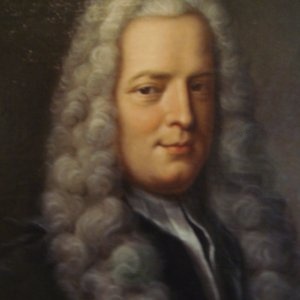.
Gabriel Cramer
Gabriel Cramer (31 July 1704 – 4 January 1752) was a Swiss mathematician, born in Geneva. He showed promise in mathematics from an early age. At 18 he received his doctorate and at 20 he was co-chair of mathematics. In 1728 he proposed a solution to the St. Petersburg Paradox that came very close to the concept of expected utility theory given ten years later by Daniel Bernoulli.

Gabriel Cramer
He published his best-known work in his forties. This was his treatise on algebraic curves, "Introduction à l'analyse des lignes courbes algébriques", published in 1750. It contains the earliest demonstration that a curve of the n-th degree is determined by
n(n + 3)/2 points
on it, in general position. He edited the works of the two elder Bernoullis; and wrote on the physical cause of the spheroidal shape of the planets and the motion of their apsides (1730), and on Newton's treatment of cubic curves (1746). He was professor at Geneva, and died at Bagnols-sur-Cèze. He did extensive travel throughout Europe in the late 1730s which greatly influenced his works in mathematics.
He was the son of physician Jean Cramer and Anne Mallet Cramer.
See also
Cramer's rule
Cramer's paradox
Jean-Louis Calandrini
References
W. W. Rouse Ball, A Short Account of the History of Mathematics, (4th Edition, 1908)
External links
O'Connor, John J.; Robertson, Edmund F., "Gabriel Cramer", MacTutor History of Mathematics archive, University of St Andrews.
Cramer's Paradox at MathPages
Retrieved from "http://en.wikipedia.org/"
All text is available under the terms of the GNU Free Documentation License


